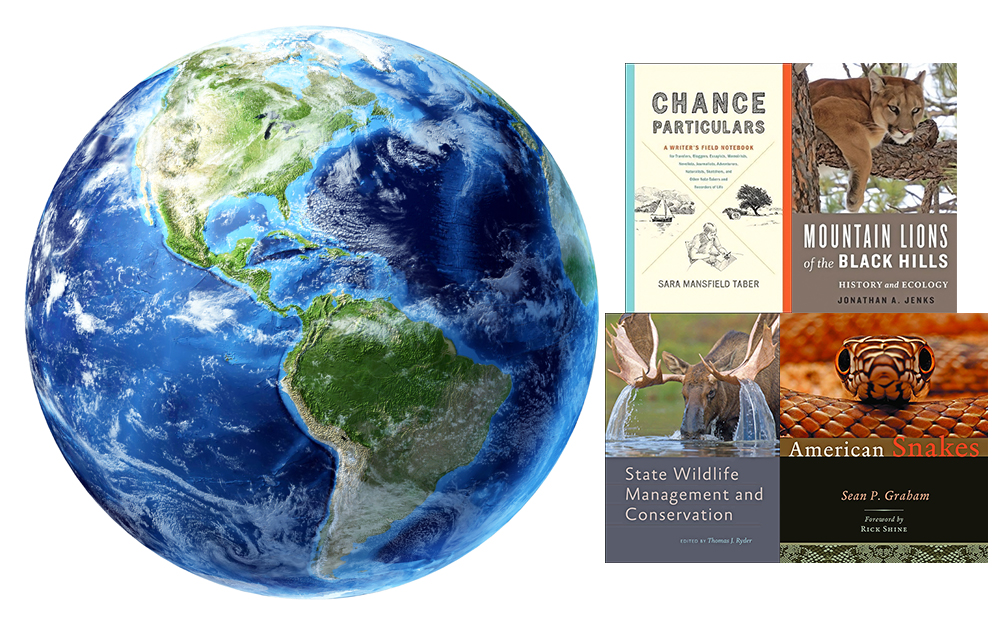
By Heidi Simmons
We live on an amazing planet! How fortunate we are to be able to contemplate our place in the universe and celebrate our existence.
Without a doubt, life on earth is spectacular! It is incredible that we get to share this magnificent place with non-human life forms. Insects, birds, reptiles and mammals live among us providing necessary biological diversity that aid in keeping healthy planet. Beyond the important part they play in our fragile ecosystem, creatures are a tremendous gift to observe and appreciate as they live their lives around humans.
American Snakes by Sean P. Graham (John Hopkins University Press, 293 pages) is a fantastic and informative read about snakes in this country! It includes lots of colorful photographs of beautiful snakes, but what makes this book exceptional, is the personal way the author shares his knowledge and love for snakes.
It opens with a humorous exchange between two snake experts – the author and a colleague — deciding who should pick up a snake they cannot identify. This made me laugh out loud as they approached the creature with respect, awe and the absolute need to know its species without being foolish when it comes to examining a potentially dangerous snake.
The book has graphs, charts, maps and charming profiles of “snake people” – biologists and herpetologists — who have contributed to a better understanding of these magnificent, misunderstood creatures.
The Coachella Valley has an incredible array of snakes from rattlers to rosy boas, but what makes this book great is that it provides answers to many of the question people have about snakes.
For instance, I liked that the author reminds the reader that snakes are animals and related to other terrestrial vertebrates – not something that exists on its own reptile branch. I have often wondered if snakes are diurnal or nocturnal creatures. It depends on the species. The western diamondback rattlesnake is diurnal, while the sidewinder is nocturnal.
The snake is one of the most fascinating creatures slithering the earth. They manage without limbs! I enjoyed learning about their biomechanics, life cycle and predators. The author is often poetic as he describes the places snakes inhabit and he includes other beautiful creatures especially birds.
When I walked out of my house yesterday, there was a snake! After a quick assessment, I knew there was nothing to fear and let her move along, glad that she was around.
This book is easy and fun to read. If you fear snakes, this is a perfect book. When you first come in contact with a snake, are you “kill first, identify later” person? If so, you definitely need to read this book.
We live in an area rich with remarkable snakes. It is their home too, we should have the decency and respect to at least know what snakes live among us and not destroy the animal just because it is a “snake.”
Mountain Lions of the Black Hills: History and Ecology by Jonathan A. Jenks (John Hopkins, 144 pages) tells the tale of the mountain lion which once existed in large numbers across the contiguous United States.
These big cats are also known as pumas or cougars, and are in serious trouble as their numbers dwindle. The author tracked over 200 mountain lions and shares how this large, secretive predator survives, and how we can balance conservation techniques with the needs of humans to save this beautiful feline.
California still has mountain lions and this book reminds us that these creatures are an important part of our state’s biodiversity and deserve a continued place to roam, hunt and procreate.
State Wildlife Management and Conservation edited by Tomas J. Ryder (John Hopkins, 238 pages) brings together wildlife leaders from practical, policy and academic backgrounds to share the story of state wildlife agencies, chronicling their efforts to restore and protect our nation’s natural resources.
This book is academic and filled with studies. However, it provides insight for those of us who cherish our natural world and want to protect it especially when you begin to understand how difficult, challenging and rewarding it is to protect wildlife.
Chance Particulars: A Writer’s Field Notebook for Travelers, Bloggers, Essayists, Memoirists, Novelists, Sketchers, and Other Note-Takers and Recorders of Life by Sara Mansfield Taber (John Hopkins, 132 pages) is a workbook to help anyone become more observant, see the small things and appreciate what’s “foreign.”
This book is a master-class writing seminar in 100 pages that includes space to journal, draw and take notes. Tabor includes short inspiring examples from world-renowned authors to get the creative juices flowing.
I included this book for Earth Day reads because of all the naturalists that came before who took copious notes and delivered us the natural world with their wise words and keen observations.
Also, in Taber’s introduction, she encourages the reader to engage with the world like being a stranger in a foreign place. Earth Day – everyday — we humans need to take a closer look at what’s around us and the creatures with whom we share the planet. We are the foreigners. After all, the flora and fauna have been here way longer than we.












































